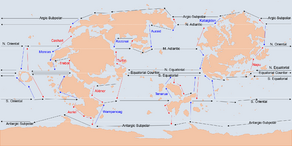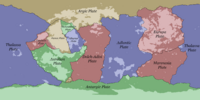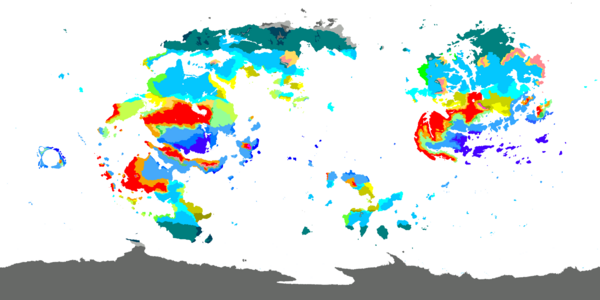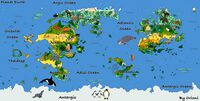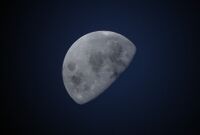Eurth
Introduction
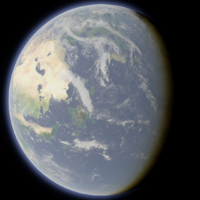 Photograph of Eurth, taken during the TBD munar mission in 1973 | |
| Orbital characteristics | |
|---|---|
| 149598023 km (92955902 mi; 1.00000102 AU) | |
| Eccentricity | 0.0167086 |
| 365.256363004 d (1.00001742096 yr) | |
| Satellite of | San |
| Physical characteristics | |
Mean radius | 6371.0 km (3958.8 mi) |
| 510072000 km2 (196940000 sq mi) | |
| Volume | 1.08321×1012 km3 (2.59876×1011 cu mi) |
| Mass | 5.97237×1024 kg (1.31668×1025 lb) |
Mean density | 5.514 g/cm3 (0.1992 lb/cu in) |
| 9.807 m/s2 (1 g; 32.18 ft/s2) | |
| 11.186 km/s (40270 km/h; 25020 mph) | |
| 23.4392811° | |
| Atmosphere | |
Surface pressure | 1 atm (100 kPa) |
Eurth, also known as Earth (Anglish), Alemi (Oharic), or Aerta (Alemannisch), is the fourth planet from the San. It is the only heavenly body in the cosmos known to accommodate life. There are eight million types of animals and plants in the Wurld. Eight million alternative solutions to staying alive. Scientific analysis and radiometric determination have concluded that Eurth developed over 4 billion years ago. The Eurth rotates around the San in 365 and ¼ days, a period commonly accepted as Eurth year. The seasons are formed by the inclination of the rotational axis in the direction of the orbital surface.
The Mun is an astronomical body that orbits planet Eurth. It is Eurth's only stable natural satellite. The gravitational relation between Eurth and the Mun has many effects: it causes oceanic tides, stabilisation of the planetary axis, and gradual reduction of Eurth's spin. Eurth is the most solid planet in the Sanar System, and the largest of the Eurrestrial planets.
The wurld contains a large variety of nations where the people speak many languages, such as Anglish, Laimiaic, Fragran, Adapton Aromance, Suverin, Oharic, and Iverican. They also speak thousands of other languages. According to the latest census data, the Eurth is home to about 5 billion euman beings.
Etymology
The current Anglish word Eurth evolved from an earlier variant of Early Anglish or Old Alemmanisch. The earliest sources mention Erda, Eorðe or Jörð as a translation of Gaia in Occidental Arhoman, and Erta or Eltus in East-Arhoman. In this context, it refers to the ground or dry soil in contrast to the wet sea. In Oharic the word Alemi translates to “wurld.”
In earlier centuries, the name “Europa” was sometimes used interchangeably to refer to the entire planet. However, it only encompasses the northeastern landmass. This was a symptom of old Eurocentric arrogance. As a response to this Eurocentrism, in the 19th century the labels of “Old Wurld” and “New Wurld” were introduced.[a]
Geography
Continents
Eurth has an approximate total land area of 131,750,000 km2 (50,870,000 sq mi). The remaining 74.17% is covered by water. The land is divided into seven continents. A continent is one of several very large landmasses of the wurld. Identified by convention rather than any strict criteria, we commonly regard up to seven regions as continents. Ordered alphabetically, these continents are: Alharu, Antargis, Argis, Aurelia, Europa, Marenesia and Thalassa. The three continental landmasses of Alharu, Argis and Aurelia are also called the New Wurld. In contrast, Europa is called the Old Wurld. Some people believe the Eurth is actually flat, such as the members of the Flat Eurth Society, but these people are obviously wrong.[1]
| Map of the Continents | Continent | Approx. total area | |
|---|---|---|---|
| Alharu | 32,400,000 km2 (12,500,000 sq mi) | ||
| Antargis | 17,800,000 km2 (6,900,000 sq mi) | ||
| Argis | 17,200,000 km2 (6,600,000 sq mi) | ||
| Aurelia | 13,500,000 km2 (5,200,000 sq mi) | ||
| Europa | 40,500,000 km2 (15,600,000 sq mi) | ||
| Marenesia | 6,500,000 km2 (2,500,000 sq mi) | ||
| Thalassa | 3,850,000 km2 (1,490,000 sq mi) |
- Alharu means “hot” in Sahrabic. The continent is located between Argis and Aurelia. Much of the Alharun coast was colonised, though parts of it did manage to resist and prosper under indigenous cultures, such as the southern highlands and the massive inland desert. Alharu can be classified as a second-wurld region, with an average GDP per capita of less than $25,000.
- Antargis means “opposite of Argis.” The continent encompasses the South Pole. Interestingly, a peninsula of the continent is warm enough to be inhabited year-round. The rest of the continent is divided among several powers, with a portion of it being an international zone where any state can build research facilities. Stationing military forces on the continent is prohibited by international treaty.
- Argis means “white” in Proto-Europan. It is the northernmost continent. Many states here are inspired by Europa and are populated by Aroman or Buranian cultures and ethnicities.
- Aurelia means “golden” in Occidental Arhoman. It lies south of Alharu. Though technically part of the Alharun continent, Aurelia developed quite differently. The continent is culturally diverse. It is a generally poor area.
- Europa means “land of the father” in Proto-Europan. It is the northeastern continent. Many states here are inspired by Afro-Eurasia and are populated by cultures and ethnicities of old-wurld origin. Europan nations colonised much of the Eurth. Nowadays, the weakened Europan states are seeking to regain their lost glory.
- Marenesia means “sea islands” in East-Arhoman. Its islands form the bridge between the old Europa and new wurld. Marenesia is very diverse, both culturally and politically.
- Thalassa means “sea” in Occidental Arhoman. It is home to many islands that fill the Oriental Ocean. It is home to islander cultures, who sailed their way across the islands from ancient Europa over Marenesia and across to Argis, Alharu and Aurelia.
Oceans
Eurth is often referred to as the “blue planet”, is distinguished for its vast bodies of water, making it a unique celestial body within the Sanar System. The watery expanses enveloping Eurth's surface, known as oceans, dominate the planetary landscape, encompassing approximately 74.17% of the total surface area. The prevalence and vastness of these oceans play pivotal roles in shaping the planet's climate, supporting a plethora of marine ecosystems, and serving as invaluable resources for human civilisations throughout history. Within the realm of the hydrosphere, the term “ocean” is typically reserved for the largest bodies of saline water. Ancient Aroma, a civilisation with vast knowledge, described the concept of Seven Seas. This notion has evolved over the millennia, and post-Elevation (1300-1600), the term has come to represent the seven principal oceanic divisions on Eurth: Adisi Ocean, Adlantic Ocean (north and south), Antargic Ocean, Argic Ocean and Oriental Ocean (north and south). One of the most awe-inspiring features of these vast oceans is their depth. The most profound underwater point is known as the $Name Deep in the $Name Trench within the $Select Ocean. This location plunges to a staggering depth of $Number meters (equivalent to $Number feet), proof of the planet's intricate underwater topography. While oceans are the prominent water bodies on Eurth, several minor seas also punctuate its landscape. These seas, often situated between landmasses, are integral to regional ecosystems and human activities. Some notable minor seas include: Azure Sea, Canamo Sea, Dolch Sea, Kosscow Sea, Qingming Sea, Raga Sea, Sunset Sea, Verde Sea, Whanganui Sea, Ygros Sea. These oceans and seas together serve as the lifeblood of Eurth, fostering biodiversity, influencing global weather patterns, and offering numerous resources that have been indispensable for the development and sustenance of human civilisations. Whether it's through commerce, exploration, or scientific research, the waters of Eurth continue to be central to the story of the planet and its inhabitants.
Tectonic plates
The lithosphere is the solid part of the Eurth, consisting of the crust and upper mantle. It is made up of 19 tectonic plates that move and interact with each other in a process known as plate tectonics. These plates are around 125 kilometres (78 mi) thick and can be either oceanic or continental in nature. There are many tectonic plates, and their ages can vary. Some plates may have existed for billions of years, while others may have formed more recently. The major tectonic plates, listed from largest to smallest, include the Antargic Plate, the Thalassan Plate, and the Arcton Plate. There is no definitive answer whether some tectonic plates are “fast” or “slow” in their movement, as plate movement can vary depending on the specific location and circumstances. However, generally speaking, plates that are moving more quickly may be more likely to experience more frequent eurthquakes, while plates that are moving more slowly may experience fewer eurthquakes. Subduction is a process that occurs when two tectonic plates collide, with one plate being either pushed down or overridden by the other. This process can lead to the formation of mountains, volcanoes, and eurthquakes.
Eurthquakes occur due to complex processes involving the Eurth's crust, mantle, tectonic plates, and associated forces. One major process involved in eurthquake formation is plate tectonics, which refers to the movement and interaction of large sections of the Eurth's lithosphere. Plate boundaries play a crucial role in eurthquake formation. The three main types of plate boundaries are: divergent boundaries, convergent boundaries, and transform boundaries. At these boundaries, tectonic plates interact in different ways, leading to the formation of eurthquakes. Stress and strain build-up along plate boundaries as a result of tectonic forces. When Stress and strain exceed the strength of the rocks, they break and release energy in the form of seismic waves, which is felt as an eurthquake. The magnitude and intensity of an eurthquake depend on several factors, including the amount of energy released, the depth of the eurthquake's focus, and the distance from the epicentre.
| Year | Magnitude | Location | Depth (km) | Notes |
|---|---|---|---|---|
| 1896 | 8.2 | Unknown | Around 4,000 people, mostly miners, were killed in the eurthquake and subsequent incidences.[2] | |
| 2018 | 6.7 | 4.0 | Death toll estimates are approximately 1,500.[3] | |
| 2022 | 6.5 | Unknown | Hundreds to a thousand died, according to the Struman Ministry of Health.[4] | |
| 2021 | 5.1 | Unknown | Hundreds of casualties were reported.[5] | |
| 2021 | 4.2 | Unknown | Hit the township of Urs'Den, near the Ude'ki mountain range.[6] |
Climate
Wladimir Köppen introduced his climate classification in the early 20th century. The system forms the basis for climatic regionalisation and glubal modelling. His collaborators and successors later modified it. It is still used by researchers across a widespread range of disciplines.[7] The Köppen climate classification divides the Eurth into five main climate groups. Each group is further divided by seasonal precipitation and temperature. The five main climate groups are A (tropical), B (dry), C (temperate), D (continental), and E (polar).
- The biggest desert. The Paran desert in central Alharu is the largest desert on Eurth.
- The warmest place. The highest natural temperature measured at ground level on Eurth is 52.9 °C at $location in $country.
- The coldest climate. The lowest natural temperature measured at ground level on Eurth is −87.9 °C at Simon Station in Antargis.
Certain fauna and flora thrive in certain regions due to the local climate, including temperature, precipitation, and humidity. These factors influence which plants and animals thrive and which do not. Understanding this link between climate and plant and animal life helps scientists and conservationists grasp the effects of climate change on ecosystems wurldwide.
Eurth's oceans, seas, and other saltwater bodies host marine habitats, which are home to a range of plant and animal life, including coral reefs, kelp forests, seagrass meadows, and more. These biomes are influenced by temperature, salinity, and nutrient levels, which vary based on location and depth. Coral reefs, for example, are found in shallow, warm waters and are home to coral, fish, and invertebrates. The deep sea is a cold, high-pressure, and low-light environment that supports adapted plant and animal life such as deep-water corals, sponges, and bioluminescent fish. Marine biomes are important for providing habitat and contributing to the global climate system, as well as supporting euman activities like fishing, tourism, and pharmaceutical production.
History
Eurth is the home-wurld of Eumanity, the only known intelligent life in the Euniverse. The earliest eumanoids were the Europithecus afropensis. It appeared about two million years ago and, in several early migrations, it spread throughout southwestern Europa. This region includes such nations as Yuropa, Wajoka, Noble Nykia, Cabarria, and Afropa. It was likely the first euman species to live in a hunter-gatherer society and to control fire. An adaptive and successful species, Europithecus afropensis persisted for more than a million years. They gradually diverged into new species by around 500,000 years ago. Most notable was the Europithecus saharensis, which adapted to live in a savannah-like climate of that time in Abantium.
The history of Eurth is dotted with the ruins of earlier countries. Those countries have always been at the mercy of its geography. Mountains rise and fall in a cycle of creation and corrosion. Verdant valleys become dry deserts. Rivers flow and flood, or divert and dry up. With time, Eumanity learned to defeat these obstacles. People began to level mountains, terraced slopes with plants, and irrigated the deserts of Amutia or Alharu. Technology allowed the construction of ships to cross the seas, or giant metal birds to climb the skies. But one iceberg can sink the ship, sending a thousand travellers to the bottom of the Adlantic Ocean. And a single hurricane can destroy in one minute a city that took centuries to construct. When rain runs too rare, then colossal cities are covered under the sands, as in once-mighty Memopotamia. Or when rain falls too generously, then trees grow to strangle societies, as in Azania. Generations of peoples establish a growing dominance over the Eurth, but their final fate is to become fossils under the fields.
Politics
Countries
This is a list of countries and dependent territories on Eurth, capital city, population, continent, and government type. The common consensus is that there are 144 countries on Eurth. Except for Antargis, every land area either belongs to or is claimed by one country or another. The list includes sovereign states, inhabited dependent territories and, in some cases, constituent countries of sovereign states. The population figures do not reflect the practice of countries that report significantly different populations of citizens domestically and overall.
Government type distinguishes between: Monarchy Republic Dependent territory Other
| Name | Capital | Population | Continent | Government type |
|---|---|---|---|---|
| Inhlokodolobha | 62,000,000 | Europa | Theocratic Republic | |
| Novumcastrum | 224,540,000 | Europa | Parliamentary constitutional Monarchy | |
| Victoires | 43,421,360 | Aurelia | Federal Parliamentary Republic | |
| Dieudonné | 15,300,000 | Europa | Presidential Republic | |
| Moskovo | 65,900,959 | Argis | Confederal Parliamentary Constitutional Monarchy | |
| Nimarci | 75,384,293 | Europa | Constitutional Monarchy | |
| Soncinia | 9,234,678 | Marenesia | Presidential Republic | |
| Solisea | 34,230,970 | Aurelia | Constitutional Monarchy | |
| Arkhavn | 28,036,248 | Thalassa | Presidential Republic | |
| Atha | 4,321,779 | Argis | Absolute Monarchy | |
| Alivezh | 13,862,000 | Argis | Authoritarian Republic | |
| Tavares | 14,650,803 | Alharu | Unitary presidential Republic | |
| Alhafa | 1,303,569 | Europa | Absolute Monarchy | |
| Honolulu | 18,900,000 | Europa | Constitutional Monarchy[8] | |
| Goja | 14,800,312 | Argis | Presidential Republic | |
| En Gannim | 8,146,286 | Europa | Constitutional Monarchy | |
| Leintwerp | 8,340,000 | Argis | Constitutional Monarchy | |
| Cronulla | 55,786 | Thalassa | Presidential Republic | |
| Kanamar | 26,650,000 | Europa | Parliamentary constitutional Monarchy[9] | |
| Dúnradh | 15,000,000 | Argis | Decentralized Confederation | |
| Pavat | 22,412,566 | Alharu | Parliamentary Republic | |
| Chyrchenya | 9,500,000 | Europa | Monarchy | |
| Port au Sud | 6,000,000 | Aurelia | Military Stratocracy | |
| Cristina | 7,453,682 | Europa | Parliamentary constitutional Monarchy | |
| Avantine | 15,500,000 | Europa | Presidential Republic | |
| Gromųva | 22,612,108 | Argis | Federal parliamentary Republic | |
| Labrador | 40,170,000 | Argis | Presidential Commonwealth | |
| Delta | 5,220,000 | Europa | Directorial Republic[10] | |
| Schlammburg | 29,283,179 | Argis | Absolute Monarchy | |
| Ceres | 22,130,469 | Argis | Presidential Republic | |
| Victoria | 12,455,651 | Argis | Constitutional Monarchy | |
| Maimedo | 33,753,193 | Alharu | Constitutional Monarchy | |
| Youcenlitna | 18,525,210 | Alharu | Authoritarian Republic | |
| Charpesiciun | 23,389,041 | Europa | Semi-constitutional Monarchy | |
| Brisa | 5,300,000 | Alharu | Unitary constitutional presidential Monarchy | |
| New Limone | 33,800,000 | Europa | Presidential Republic | |
| Sintra | 27,113,795 | Europa | Presidential Republic | |
| Montcharmin | 26,223,000 | Alharu | Parliamentary constitutional Monarchy | |
| Akaiyama | 28,736,211 | Europa | Authoritarian Republic | |
| Bogd Gioro | 32,000,000 | Alharu | Council Republic | |
| Penzance | 28,542,321 | Europa | Federal parliamentary constitutional Monarchy | |
| Cascadia | 9,517,000 | Argis | Semi-presidential Republic | |
| Porto D'Galo | 18,344,760 | Argis | Constitutional Republic | |
| Bromwich | 57,990,240 | Marenesia | Parliamentary constitutional Monarchy | |
| Parsa | 9,958,401 | Argis | Semi-Constitutional Federal Monarchy | |
| Saipuo | 10,278,427 | Thalassa | Authoritarian Republic | |
| Girk | 6,200,000 | Argis | Parliamentary Republic | |
| Læniguëuíl | 19,747,898 | Argis | Parliamentary constitutional Monarchy | |
| Godstone | 109,734,597 | Europa | Constitutional Monarchy | |
| Pashae | 8,800,000 | Aurelia | Mixed Regimes | |
| Chel de Yorn | 119,733,589 | Europa | Absolute Monarchy | |
| Khewet | 29,159,251 | Alharu | Presidential Republic | |
| Gournaion | 216,510 | Europa | Parliamentary Republic | |
| Nowhere City | 38,000,000 | Argis | Confederal Republic | |
| Grobija | 3,231,421 | Argis | Federal Republic | |
| Darhan | 152,400,000 | Europa | Authoritarian Republic | |
| San Foca | 26,768,932 | Aurelia | Presidential Republic | |
| Itzal | 39,629,000 | Alharu | Unitary Semi-Constitutional Monarchy | |
| Intreimor | 59,651,396 | Transcontinental, in Argis and Alharu | Constitutional Semi-Presidential Parliamentary Republic[11] | |
| Zestrathaven | 21,000,000 | Argis | Monarchy | |
| Ngawi | 28,395,261 | Alharu | Parliamentary constitutional Monarchy | |
| Si Khinpūn | 30,000,000 | Alharu | Presidential Republic | |
| Achilleia | 34,390,000 | Aurelia | Constitutional Monarchy | |
| Vakor | 39,534,000 | Aurelia | Authoritarian Republic | |
| Halawai | 121,480 | Thalassa | Parliamentary Consitutional Monarchy | |
| Kotowari City | 52,860,000 | Europa | Presidental Republic | |
| Dākuōku | 40,000,000 | Marenesia | Absolute Monarchy | |
| Reszow | 37,155,290 | Argis | Parliamentary Consitutional Monarchy | |
| Kaslund | 21,254,000 | Argis | Parliamentary Republic | |
| Saint Christopher | 3,136 | Argis | Parliamentary constitutional Monarchy | |
| Saint-Philippe | 17,683,306 | Aurelia | Parliamentary constitutional Monarchy | |
| Fliorjinka | 28,854,306 | Argis | Confederal Republic | |
| Couer | 20,372,959 | Europa | Parliamentary Republic | |
| Jutpandi | 27,437,492 | Europa | Parliamentary Republic | |
| Manaca City | 361,225 | Transcontinental, in Alharu and Aurelia | Presidential Republic | |
| Modena | 47,050,034 | Europa | Authoritarian Republic | |
| Piri | 9,149,522 | Europa | Presidential Republic | |
| Minafi Aleasifa | 24,103,580 | Marenesia | Council Republic | |
| Orthen | 5,750,000 | Europa | Directorial Republic | |
| Kenkyō | 9,723,000 | Aurelia | Absolute Monarchy | |
| Ataksak | 487,623 | Argis | Constitutional Republic | |
| Mannarsto | 8,900,435 | Argis | Confederal Republic | |
| Tondo | 14,904,421 | Alharu | Iverican dominion | |
| Ranke | 14,906,117 | Europa | Council Republic[12] | |
| Musha | 57,450,000 | Europa | Monarchy | |
| Hakbar | 25,710,000 | Europa | Theocratic Monarchy | |
| Arkos | 9,998,791 | Argis | Federal parliamentary Republic | |
| O'polis | 143,779,160 | Europa | Parliamentary constitutional Monarchy | |
| Rugi | 25,813,303 | Argis | Confederal Republic | |
| Paintaini | 8,591,011 | Alharu | Council Republic | |
| New Halsham | 12,011,000 | Argis | Presidential Republic | |
| Taqdir | 203,412,021 | Europa | Presidential Republic | |
| Porto Premia | 26,000,000 | Europa | Republic | |
| Toloa | 37,458,992 | Europa | Semi-constitutional Monarchy | |
| Minsk | 40,203,000 | Argis | Presidential Republic | |
| Rhavapura | 39,000,000 | Alharu | Presidential Republic | |
| Friedrichstadt | 10,000,000 | Aurelia | Parliamentary constitutional Monarchy | |
| Kalava | 11,071,984 | Argis | Parliamentary constitutional Monarchy | |
| Vali | 1,691,876 | Thalassa | Parliamentary constitutional Monarchy | |
| Bellamy | 9,897,654 | Alharu | Unitary theocratic elective Monarchy | |
| Ponaiga | 38,512,203 | Europa | Directorial Republic | |
| Xiàmian | 17,660,000 | Europa | Presidential Republic | |
| Sabato | 0 | Marenesia | Unitary Republic | |
| Santa Isabel | 0 | Marenesia | Council Republic | |
| Deopolis | 23,001,900 | Marenesia | Presidential Republic | |
| Levia | 0 | Argis | Presidential Republic | |
| Harburg | 15,776,998 | Aurelia | Parliamentary Republic | |
| Selbourne | 34,354,000 | Argis | Parliamentary constitutional Monarchy | |
| Ikary | 1,927,577 | Europa | Presidential Republic | |
| Ganris | 45,130,102 | Europa | Parliamentary Republic | |
| Kapojvar | 18,727,052 | Argis | Authoritarian Republic | |
| Timabria | 5,260,000 | Argis | Parliamentary Republic | |
| Sunset City | 164,627,827 | Thalassa | Provisional. All authority vested in a committee of the nation's military leaders for the duration of a state of emergency; constitutional provisions for government are suspended. | |
| Chişinău | 111,815,000 | Europa | Parliamentary constitutional Monarchy | |
| Tagmatika | 253,491,524 | Europa | Parliamentary constitutional Monarchy | |
| Alaghon | 80,193,963 | Europa | Parliamentary Republic[13] | |
| Tapaka | 629,519 | Thalassa | Federal presidential republic | |
| Stahall | 45,295 | Argis | Unitary semi-constitutional Monarchy under a direct democracy | |
| Tavliga | 16,450,000 | Argis | Semi-constitutional Monarchy | |
| Grant, D.C. | 27,438,100 | Aurelia | Federal presidential constitutional republic | |
| Havsborg | 25,825,764 | Argis | Parliamentary constitutional Monarchy | |
| Ferrefaaierhafen | 41,910,000 | Transcontinental, in Alharu and Argis | Semi-presidential Republic | |
| Vilvau | 12,129,800 | Argis | Constitutional Republic | |
| Bastaria | 30,403,490 | Argis | Council Republic | |
| Prykarpattia | 16,450,000 | Argis | Unitary Parliamentary Constitutional Monarchy | |
| Antium | 146,520,000 | Europa | Parliamentary Republic | |
| Mungumji | 10,494,000 | Europa | Provisional | |
| Tyrámen | 10612980 | Argis | Parliamentary Republic | |
| Wëngabiook | 6,220,000 | Europa | Theocratic Republic | |
| Ferrescan | 30,203,486 | Alharu | Parliamentary constitutional Monarchy | |
| Centridge City | 61,600,000 | Europa | Constitutional Monarchy | |
| Sandrica | 11,000,000 | Aurelia | Absolute Monarchy | |
| Kaldana City | 15,733,589 | Europa | Semi-Autonomous Colonial Autocratic Monarchy | |
| Eurth | 4,099,396,403 |
Sovereignty disputes

- Bouenezenn island: Bouenezenn island is divided among the Aurivizht state of
 Bouenezenn, and the Ebrarian State of
Bouenezenn, and the Ebrarian State of  Insmerda, both of which claim full ownership over the island.
Insmerda, both of which claim full ownership over the island.  Burkini and
Burkini and  Rohini have both been described as satellite states of Orioni.
Rohini have both been described as satellite states of Orioni.- Ceris: This island in the Adlantic Ocean is divided among several warring factions of the Sentist War.[14]
 Cristina: The city of Cristina is regarded by the Mantellan government as its third constituent entity.
Cristina: The city of Cristina is regarded by the Mantellan government as its third constituent entity. Deltannia until 1959 was considered a puppet state of Volsci.
Deltannia until 1959 was considered a puppet state of Volsci. Faramount: Government-in-exile: the People's Republic of Faramount.
Faramount: Government-in-exile: the People's Republic of Faramount. Hexanesa: A breakaway state that is unrecognised by Tagmatium.
Hexanesa: A breakaway state that is unrecognised by Tagmatium. Mauridiviah: Several Madrian groups, the most famous of which being Triunforoh Triunfante, claim legitimate sovereignty over Mauridiviah, but no nation recognises them.
Mauridiviah: Several Madrian groups, the most famous of which being Triunforoh Triunfante, claim legitimate sovereignty over Mauridiviah, but no nation recognises them. Kaseka: Although officially recognised as part of Seylos by Great Xio, the nation has made numerous attempts to coerce the city state and Seylos into returning it to the Kingdom of Khao within the Xiohane. Great Xio has also not yet recognised Kaseka as part of the North Adlantic Union.
Kaseka: Although officially recognised as part of Seylos by Great Xio, the nation has made numerous attempts to coerce the city state and Seylos into returning it to the Kingdom of Khao within the Xiohane. Great Xio has also not yet recognised Kaseka as part of the North Adlantic Union. Sentist State: No nation officially recognises it exist, despite its de-facto control over Yosmein, Ashein, and Dopraystein.
Sentist State: No nation officially recognises it exist, despite its de-facto control over Yosmein, Ashein, and Dopraystein.
Former countries
This is a list of historical sovereign states that once existed on Eurth, but have since been dissolved because of conflict, war, rebellion, annexation, or uprising.
| State | Capital(s) | Note | Existed |
|---|---|---|---|
| Ghobari Kailali, Vaddkewatta, Kailali | Monarchy in the Orient | 100s BCE – 50s CE | |
| Vulga Supra, Moskova(o), Peterburi | Monarchy in Argis, later formed Ahrana | ~500 BCE – 1553 CE | |
| Adthens | Monarchy in the Occident, historic precursor of the Aroman Empire | 4th century BCE | |
| Kobyso, Banogana | Monarchy in Azania | $year – $year | |
| Aroma | Monarchy in Occidental Europa | 250 BCE – 296 CE | |
| Taqdir | Monarchy in Amutia | 13th – 16th centuries CE | |
| Pa'pi | Thalassocracy in South Europa | 5th century BCE – 2nd century CE | |
| San Escobar | Country in Alharu | 1812 – 1843 | |
| Dagbad | Monarchy in Memopotamia | 5th – 14th centuries CE | |
| Mutina, Lilium, Venetia | Monarchy in Amutia | 20 CE – 1180 CE | |
| $city | Monarchy in Azania | $year – $year | |
| $city | $note | $year – $year | |
| Dhanaa | Monarchy in Azania, became a tributary state of Qubdi | c. 100 BCE – 520 CE | |
| Eastminster, Rhodeport | Monarchy in Argis, later formed Delamaria | 1704 – 1819 | |
| Alberta | Colony in Argis, now part of Delamaria and Fravina | 1778 – 1819 | |
| Meda | Monarchy in Orioni | $year – 536 BC | |
| Meyerville | Monarchy in Argis, annexed by Delamaria | 1787 – 1852 | |
| $city | Monarchy in Amutia, defeated and dissolved by Nicolas I | $year – 1814 | |
| Dvaraka | Monarchy in Europa | 500s BCE – 500s CE | |
| Ikary | Monarchy in Amutia | 1377 – 1850 | |
| $city | Monarchy in Burania, split into Deltannia and Tal Shiar | 500s – 1500s CE | |
| Tualcacán | Monarchy in Pecario conquered by Iberic settlers | 1250 – 1652 | |
| $city | Country in Alharu | 1742 – 1871 | |
| Xhengdu | Oriental monarchy; destroyed when Buranian nomads invaded and sacked the capital | $year – 1029 CE | |
| $city | Republic in Alharu | $existed |
Sanar System

The Sanar System is a collection of orbiting celestial bodies that are gravitationally bound to the San. The Sanar System began its formation 4.6 Billion years ago as a result of the gravitational collapse of a large interstellar molecular cloud. The Sanar System possesses numerous bodies, the largest beside the San being Satre having a mass over 480 times that of Eurth.
There are 12 to 14 planets in the Sanar System, with the status of Paidios and Pluta as either major planets or minor planets disputed within the scientific community[15].
San
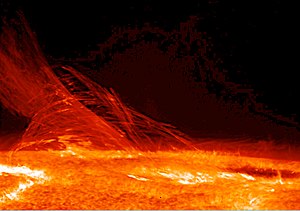
The San is the Sanar system’s singular star, with its mass accounting for over 99% of that of the Sanar system. Due to its massive size the core of the San is hot and dense enough to sustain nuclear fusion, releasing enormous quantities of energy that is radiated out into space ,heating uhe planets and other celestial bodies in proximity. It is due to the San that life exists on Eurth.
Mun
The Mun is a relatively large, terrestrial, planet-like natural satellite. The gravitational attraction between Eurth and its moon causes the ocean's tides. Some scientists believe the Moon may have dramatically affected the development of life by moderating the planet's climate. The name of the Moon varies in different cultures, being known variously as Muna in Arhoman, Moon in Anglish, Ayibi in Oharic. As of 2020, there were 704 operational, human-made satellites orbiting the planet. There are also inoperative satellites and over 9,000 pieces of tracked space debris. Eurth's largest artificial satellite is the EOS Space Station.
Other planets
The planets of the Sanar System are classified either as the Sanward planets and the Sanway planets, or organised into three groups: inner planets, middle planets, and outer planets. The distinction between the two classifications comes down to whether the planets of Paidios and Pluta are either major planets or dwarf planets within an astronomical community. Most of the scientific community acknowledge Paidios and Pluta as planets in their own right, as their local orbits have been largely cleared of asteroids, though the Dust Belt they are a part of remains. Thus, the 3 groups planetary model is used the most in scientific literature.
Inner planets
The 7 inner planets orbit the region from the San up to the Asteroid Belt. These planets orbit relatively close to the San and are rocky in composition, made up of silicate mantles and metal cores. The asteroid belt occupies the orbit between Petrus and Andreus and Satre.[15]. The Sanward planets definition also covers the same planets.
- Hyperion is the closest planet to the San.
- Balder and its moon Nanna.
- Eurth and the Mun.
- Laran
- Maraz
- Pertrus and Andreus, and their co-orbiting moon Paulus.
Middle planets

The four middle planets orbit the Sanar region from the Asteroid Belt to the Dust Belt. The dust belt occupies the orbit between Thanatos and Paidios. The dust belt is a large circle of dust similar to the asteroid belt, consisting mostly of icy objects.[15]. The Sanway definition also includes Vanth with the middle planets.
- Satre, known since ancient times due to its expansive rings, and its moon Albus
- Diaphres and its moons Apollo, Nortia, Maris, and Artemis.
- Ether and its moon Thalassa.
- Thanatos, and its many minor moons such as Geras, Oizys, Moros, and Apate.
Outer planets
Finally, the three outer planets / dwarf planets orbit the Sanar region from the Dust Belt to the outer reaches of the Sanar System[15] and is the most controversial classification of planets.
Notes
- ↑ OOC. This distinction solves the inconsistency of some older RP stories, published during the years when the community still resided in Europa (region).
References
- ↑ Big Story News, Where in the wurld is Wally? (18 December 2018)
- ↑ Llalta factbook on Coal Mining (1812 - 1897)
- ↑ The Gallambrian, Eurthquake hits Wesses Many feared dead. (18 January 2018)
- ↑ Struman National Press, Magnitude 6.5 eurthquake shakes the nation (6 July 2022)
- ↑ Kronografia, Eurthquake Shakes East Coast (12 August 2021)
- ↑ Imperial News Now, Rainy season begins (18 August 2021)
- ↑ Updated world map of the Köppen-Geiger climate classification (1 March 2007)
- ↑ Kingdom of Bainbridge Islands (5 May 2006)
- ↑ Overkingdom of Cabarria (21 January 2007)
- ↑ Glorious Dominion of Deltannia (5 November 2005)
- ↑ Government of Iverica (17 February 2021)
- ↑ National Comrades of Niederoestereich (21 March 2005)
- ↑ United Republic of Tamurin (27 October 2005)
- ↑ Doom of Ceris (31 October 2019)
- ↑ 15.0 15.1 15.2 15.3 15.4 Sanar System 2021 December Contest (3 December 2021)
External links
- Eurth on SimStates
- Eurth on Accord
- Eurth on Threadit
- Eurth News on Wittier
- Eurth News on TubeHub


